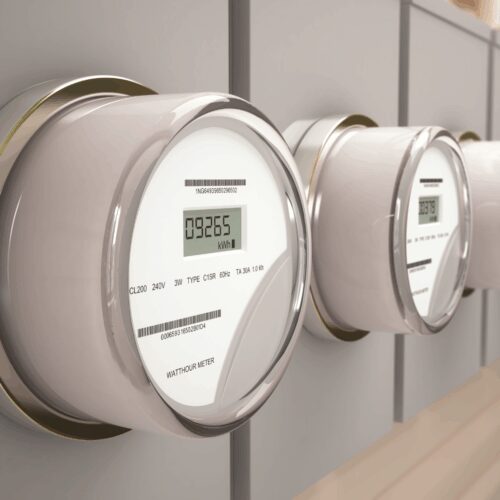Virtual power plants and time-varying rates
The next big power move for a smarter grid.

The next big power move for a smarter grid.

Sign up for our magazine
The premier outlet for compelling storytelling around the innovators and innovations driving the clean energy transition.
The energy system is changing fundamentally and new grid management strategies are needed to manage this transition. Decarbonization goals in 24 states and the District of Columbia are accelerating the shift to renewable generation and the electrification of end-uses in transportation, industry, and the built environment. At the same time, utilities are forecasting rapid demand growth for data centers, which could triple peak load in some areas. Throw in operational challenges stemming from changing demand profiles, volatile fuel costs, intermittent renewables, and extreme weather events and you have enough to keep utilities and their regulators up at night.
Thankfully, utilities are investing in new grid management tools to manage this transition, including virtual power plants (VPPs). At a high level, VPPs are networked systems that aggregate multiple distributed energy resources (DERs) and manage them as a unified, flexible power source. By combining a diverse range of energy resources, utilities can use VPPs to help stabilize the grid by balancing supply and demand, smoothing out fluctuations, and preventing outages. The growth of DERs coupled with innovations in energy management software, real-time data analytics, and communication technologies make VPPs an attractive choice to meet growing energy demand. In fact, the U.S. Department of Energy estimates that VPPs could meet up to 20% of the nation’s total electricity needs by 2030.
As we move into this new age of energy management, the potential of VPPs is becoming increasingly clear. However, we can’t overlook the role of a complementary tool in the load flexibility toolbox: Time-Varying Rates (TVRs).
Understanding TVRs and DERs
Two key components are crucial in advancing VPPs: TVRs and DERs. TVR is a blanket term covering several categories of customer rate design where electricity prices vary at times of day (and often seasonally). This includes familiar time-of-use (TOU) pricing, but also critical peak pricing (CPP) where electricity prices spike during peak periods, and even real time pricing (RTP) where electricity prices reflect dynamic fluctuations in wholesale market prices. DERs are decentralized technologies, such as solar panels, electric vehicles (EVs), batteries, and smart devices, that generate, store, or manage electricity close to the point of use. Both TVRs and DERs play pivotal roles in modern energy systems. TVRs optimize energy consumption and support grid stability by incentivizing shifts in usage patterns, while DERs enhance grid resilience by providing localized and flexible energy solutions.
While the rapid growth of DERs – expected to expand by 217 GW through 2028 – presents exciting opportunities, it also raises concerns about grid integration and complexity in management. Fortunately, TVRs can significantly help with VPP planning by aligning energy consumption patterns with the availability and characteristics of these DERs. In fact, though TVRs and VPPs are often considered and implemented as distinct solutions, they are fundamentally complementary.
The Brattle Group forecasts that customer participation in TVR will increase to 35% of households in 2030, up from less than 9% in 2021. Smart meters are deployed in approximately 70% of American households, and there is an uptick across the country in the number of homes with smart thermostats, smart appliances, and electric vehicle (EV) chargers. Not only can TVRs reduce consumer costs (e.g., TVR-informed charging can reduce the cost of charging an EV by more than half), but they can also significantly decrease utility costs as a non-wires alternative (NWA) to costly infrastructure upgrades that would otherwise be needed to meet peak demand. Berkeley Lab identifies an emerging opportunity for utility TVR programs to deliver “price-based demand response”, a resource whose load flexibility value is frequently underappreciated and underutilized in bulk and distribution system planning.
The Role of TVRs and DERs in Modern VPP Design
VPPs – particularly when designed in coordination with TVRs and DERs – are uniquely positioned to achieve a daily, predictable, and persistent load shift through device- and rate-enabled demand management. VPPs integrate DERs with automation solutions to dynamically adjust energy use based on real-time data. For example, during peak demand periods, VPPs can utilize energy stored in home batteries or EVs, which are ideally being charged during off-peak times when rates are lower. To help simplify the process and optimize customer enrollment in VPPs, utilities can bundle smart device incentives and innovative rate structures with VPP enrollment. While offering customers incentives for smart devices can increase participation in VPP programs, coupling these incentives with flexible TVR pricing makes it more likely that customers will adjust their energy use and invest in DERs.
Ultimately, customer engagement will depend on the practicalities of interacting with a utility. Although VPPs, TVRs, and DERs offer immense potential, their success hinges on how easily customers can access and understand these offerings. A bleak but powerful finding by Accenture noted that consumers spend less than 10 minutes per year engaging with their utility. Providing customers with insight into their DER options and related cost impact so they adopt more clean energy and electrified technologies is critical to achieving decarbonization targets.
By showing customers a solution that allows them to ‘stack’ the various technologies available to them (including DERs and TVRs), utilities can alleviate the complexity of available options and address cost-related concerns. Utilities should meet customers wherever they are on their load flexibility journey, providing multiple program entry points and opportunities to level up program participation by enrolling new DERs or subscribing to more advanced TVR structures. To be successful, these efforts must be coupled with commensurate investments in customer education and engagement. Fortunately, GridX and Uplight offer a variety of rate education tools, including readily available online calculators that enable customers to determine the cost impact of their clean energy decisions – including analyzing the impact of multiple DERs.
By understanding usage patterns and preferences, utilities can effectively determine how to group and dispatch customers within VPPs. Offering “what if” scenarios that use actual household-level historical energy data can accurately show customers the bill impact of behavioral load shifting and DERs under existing rate options. For example, customers who value comfort over cost may prioritize stable temperature settings while those who are more price-sensitive might be more willing to adjust their energy use in response to variable rates, making them ideal candidates for programs that capitalize on shifting demand to off-peak times. By tailoring VPP participation strategies to its customers, a utility can effectively align demand response actions with both individual customer needs and overall grid management goals.
Conclusion
VPPs have the power to transform energy distribution by seamlessly integrating diverse DERs and real-time data, effectively balancing supply and demand, and boosting grid stability while reducing outages. Utilities have the opportunity to expand customer participation in VPPs by extending DER compensation models to include TVR. Existing and planned rate designs should be thoughtfully coordinated with VPP goals–or better yet, directly integrate TVR as part of a diverse mix of resources powering the VPP itself. By leveraging both TVRs and DERs within a VPP framework, utilities can streamline enrollment, enhance customer bill savings, and optimize load shifting. Thanks to today’s advanced technology, we can transform what was once a complex challenge into a manageable, streamlined solution.
Written in collaboration with Uplight. Read the original article from Utility Dive here.




